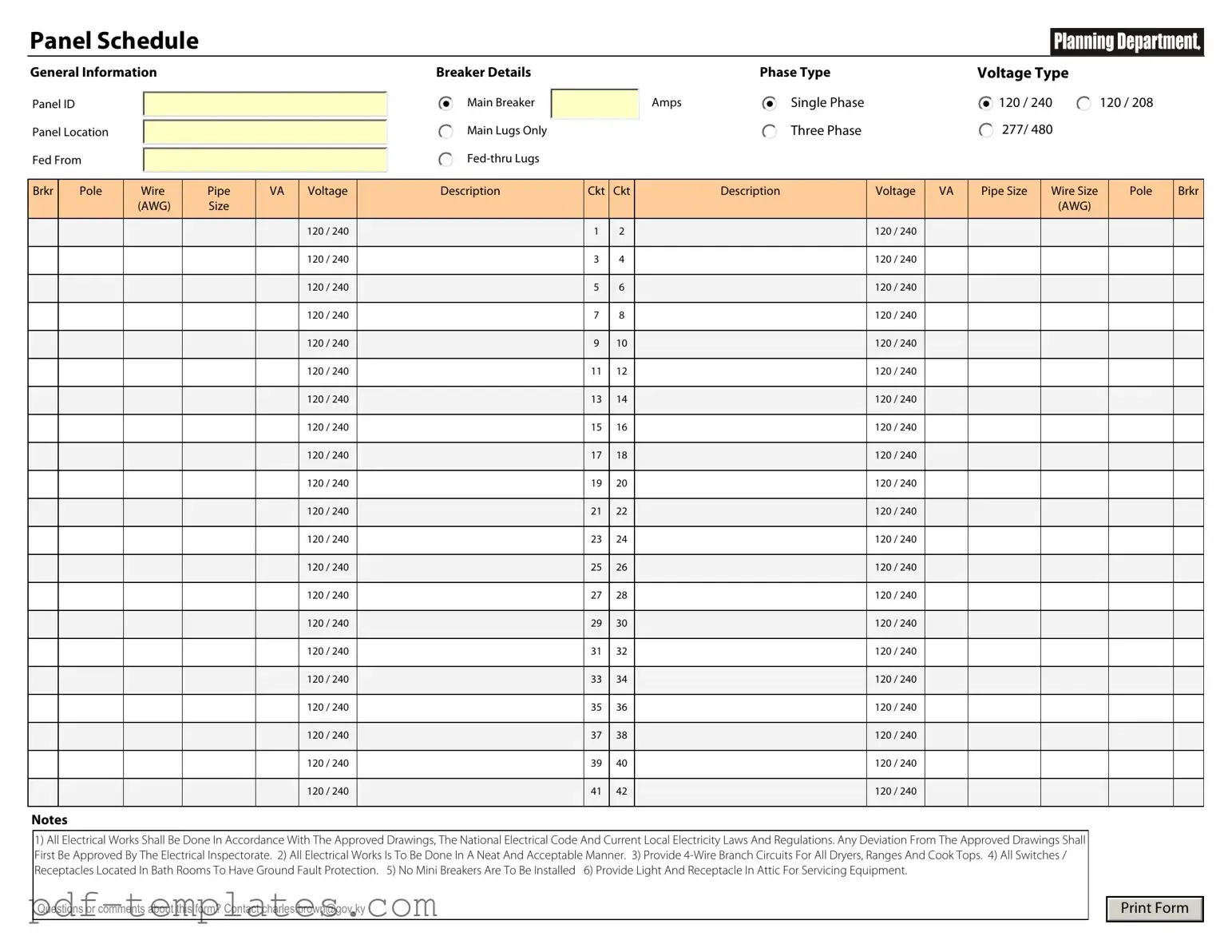Get Electrical Panel Schedule Form in PDF
The Electrical Panel Schedule form is a crucial document used to outline the electrical circuits in a building. It provides essential information about the distribution of electrical loads, ensuring safety and compliance with regulations. Understanding how to fill out this form accurately is important for anyone involved in electrical installations or renovations.
Ready to get started? Fill out the form by clicking the button below.
Customize Form Now
